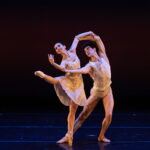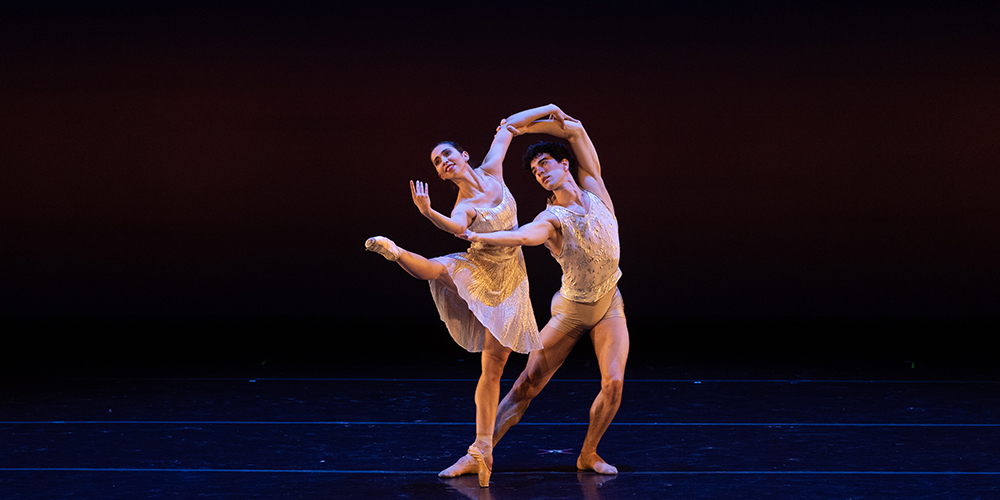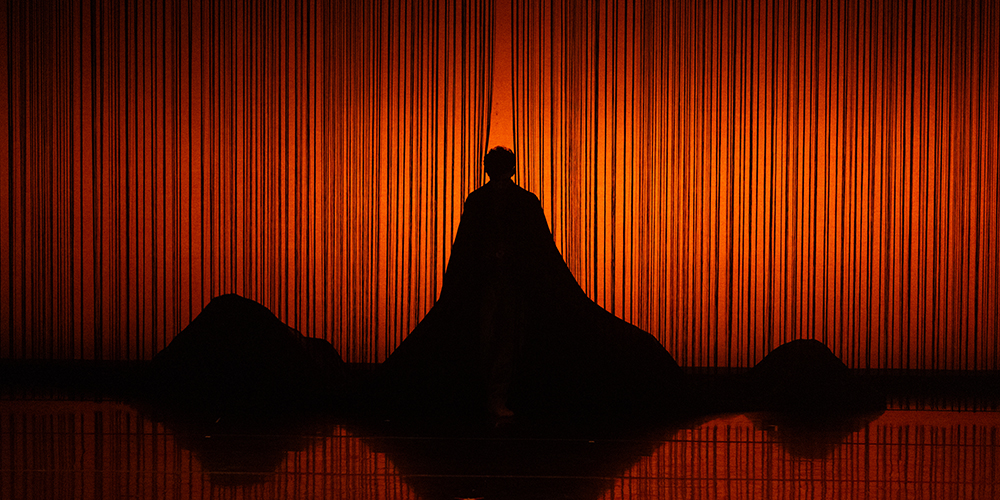We sat down with some of the men of Ballet Arizona, to talk about what it is like to be a professional ballet dancer and the challenges they face while pursuing their dreams.
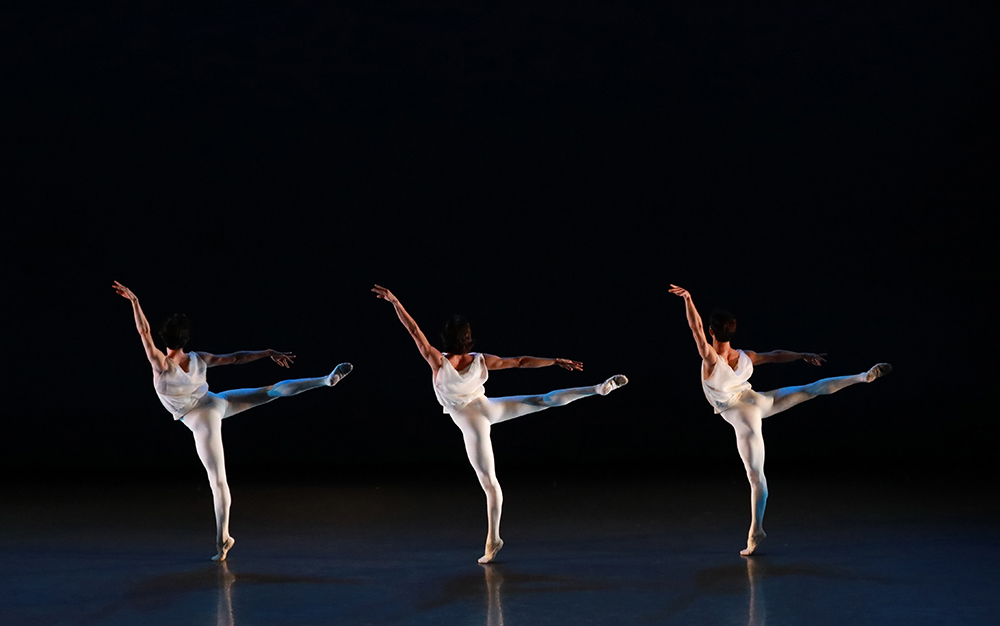
Why did you decide to pursue a career in dance?
Ricardo Santos: I always liked dancing as a kid…all types of dancing! My cousins and I had a little group and we were always dancing together. They started doing ballet at a church we used to attend and they invited me to join. I asked my mom if I could, but she didn´t really want me to do ballet because it was something that I would have to take seriously and dedicate myself to and she didn´t think that I was ready. So I had to beg her for almost a whole year to let me try and when she finally let me join, I simply fell in love with it.
Erick Garnica: I decided to pursue a career in dance because I believe that creating art and being part of art organizations is an amazing way to help bring beauty into this world.
Atsunari Matsuyama: Because dancing is my passion, it makes me so happy, and is the one best ways I can express myself.
What challenges do you think young boys face when pursuing ballet?
Alberto Peñalver: I think some of the challenges that young boys have to go through are homophobia and bullying from other kids. It’s crushed many dreams, and even adults experience it, unfortunately. But it is also the extreme physical and mental demands that ballet puts you through at a very young age.
Erick Garnica: Many boys face bullying in school, luckily, I was never bullied for dancing. Being told by ballet teachers to be more masculine always has been really hard.
Alberto Morales Perez: All around the world, ballet isn’t something that has been very accepting of guys, especially when we were in school. The world is evolving and more accepting nowadays, but there is still a lot of misconceptions and beliefs that ballet isn’t a real career; not one that is for men or for someone wanting to provide for a family with a “real job.”
Helio Lima: There are the pressures of close minded people in society but the real challenge we face is finding out who you are and embracing it. My advice is to put the challenge of that journey towards your dance and be vulnerable when you are on stage. Let the audience contact you through your dance and never be afraid.
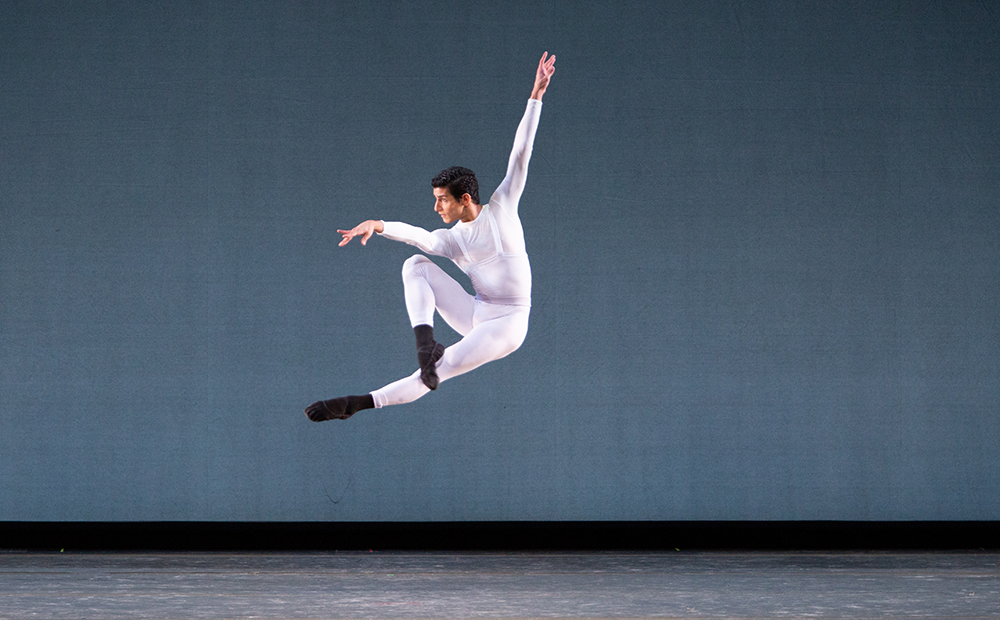
What is training like as a male dancer and going from a student to a professional?
Atsunari Matsuyama: The big difference between being a student and professional for me is the way I think about ballet. As a student, I was thinking about building my basics, but as a professional, I’m thinking about how I can bring joy to the audience. But I never forget to get better in every ballet class!
Alberto Peñalver: For me personally, it’s harder for my body to do the “male steps” and I had to deal with corrections from teachers like “your legs looks like girls and you are a man so it looks weird,” so having to please the aesthetic of what I’m supposed to look like has always been a challenge.
Ricardo Santos: Training is extremely hard. We spend hours and hours in the studios practicing jumps, turns, partnering, more jumps, and tricks. When I was young from the age of 12-18, I was in the studios from 2 pm till 10 pm…sometimes even 1 am. Especially if we were getting ready for a school show or for a competition, which was almost every month.
What challenges do you think men still face in the ballet world?
Helio Lima: For me, it is the recognition, not just for the men, but in general. We see so many athletes in football, basketball, etc. out there getting awards, respect, amazing scholarships, big sponsors and so much recognition. Don’t get me wrong, it’s well deserved, but where is that same appreciation for dancers? It almost never happens and you maybe get to see one in a hundred get the recognition they deserve. I have heard people say, “but you are not athletes, it’s different”. You’re right! We are more than athletes. The amount of work and damage that we do to our bodies is insane. I have so much respect for this art form, I just wish there would be more respect and recognition from others.
Alberto Peñalver: The challenges that male dancers still have today are toxic masculinity. It is forced onto many male dancers, especially in roles with no story behind it. I’m tired of hearing “he is too feminine dancing”. Ballet is one, if not the only art form, that is still as sexist as it was 100 years ago and now is a great time to change that.

What is one of your dream roles?
Erick Garnica: A solo set on me by William Forsythe and Parris Goebel that doesn’t exist yet! Manifesting!!
Alberto Morales Perez: I used to dream about performing Albrecht from Giselle, but in the last couple of years, I have gotten to do some really fun roles and I have realized that there are really rewarding roles that aren’t necessarily the main principal guy. A dream role would be one that challenges me and where I feel like I have accomplished it by making it look good, without it being too easy.
Ricardo Santos: My dream role to perform would be Romeo from Romeo & Juliet. There is so much artistry, acting, and emotions involved in this ballet. I would love to explore more of that side of myself as a dancer.
Do you have a preference for classical or contemporary works?
Atsunari Matsuyama: Definitely classical ballet for me, because I love how classical ballet has history and hasn’t really changed from a long time ago.
Helio Lima: I love dancing classical or contemporary, but my favorite is Balanchine. I love how challenging, extreme, and freeing it can be.
Erick Garnica: I prefer dancing classical ballets that are pure beauty and drama or contemporary ballets that are a bit more edgy and forward thinking. Neoclassical is my least favorite because it’s most likely to be cheesy.

What does your work out routine involve?
Alberto Morales Perez: Working out and exercising is something that through the years I have had a very hard time doing. I don’t enjoy working out and I have phases where I have been very into it, but it has never lasted long. It’s something that is really important for us dancers, especially guys. We need to be able to partner and we need to be strong to avoid injuries, so it’s very important to push through it. Normally when I work out, I just do basic gym exercises to engage the different muscles in my body, but nothing too specific. I like to get advice from my friend and fellow company dancer, Adrian Durham, who has a lot of knowledge on this.
Ricardo Santos: My workout routine involves cardio, weight lifting, abs, and stretching
Atsunari Matsuyama: I haven’t been able to work out a lot now, but I like to focus on my upper body because male dancers need to be strong to lift female dancers and if your upper body is strong enough, you’ll be able to control your body better too.
What is your advice to young men interested in dance?
Helio Lima: Always be yourself. Trust and listen to your teachers, always give 100%, and don’t worry about the others. Find what makes your dance different and use it to make you special. Don’t ever give up, no matter how hard or how many “no’s” you get.
Alberto Morales Perez: I would tell young men to give ballet a fair chance. It’s a very rewarding career, but it is also one that is very difficult. You will miss out on a lot of things in your life, and you will have to give up a lot to be able to get where you want to be, but like any other thing in life, if you enjoy the process and you give it your all, it can be very rewarding and a great experience.
Alberto Peñalver: To dance, dance wherever and however they want and be happy.


